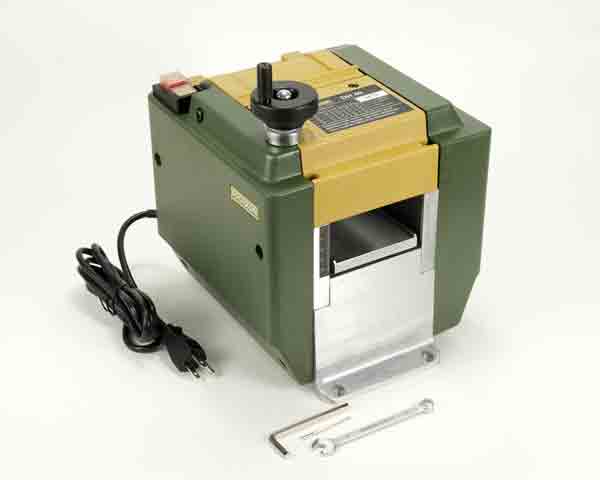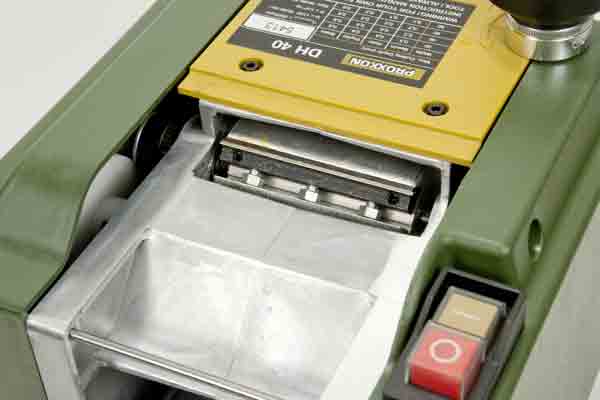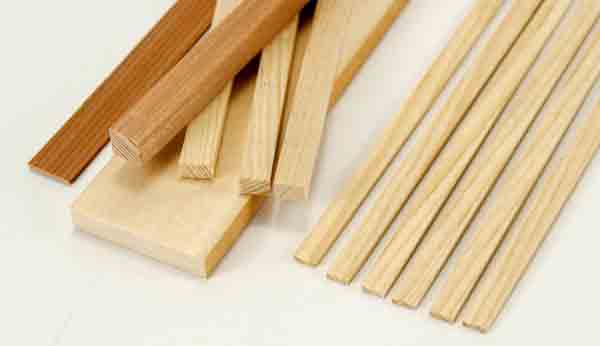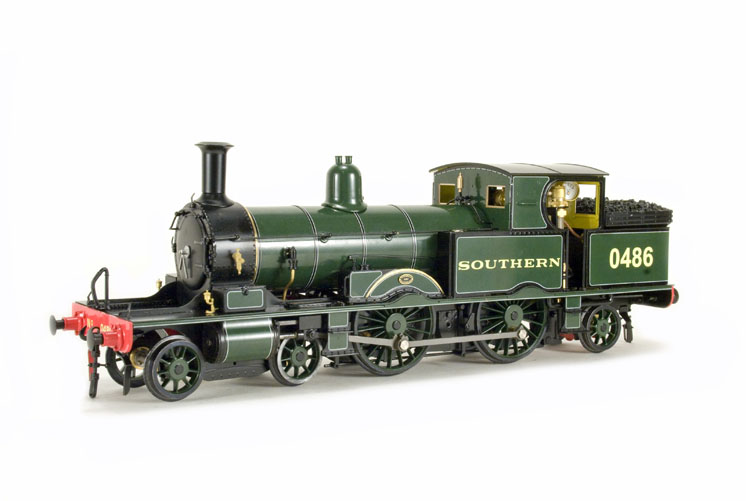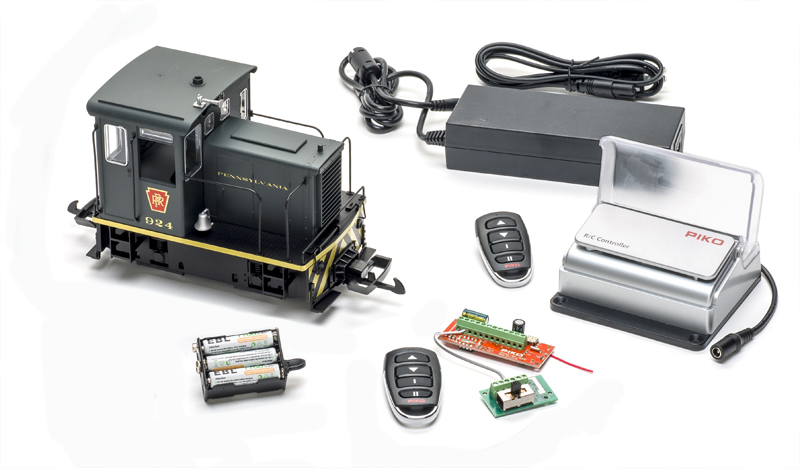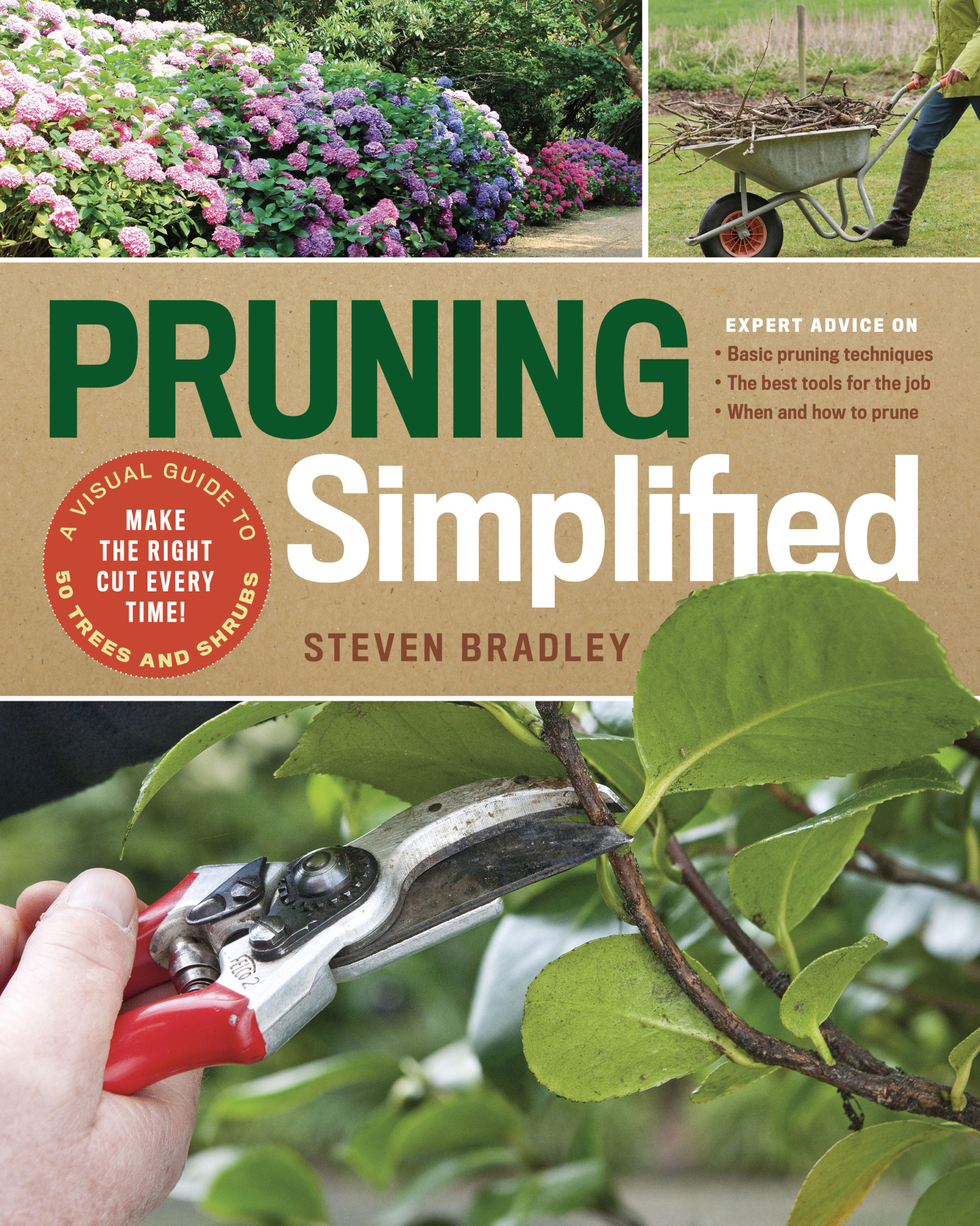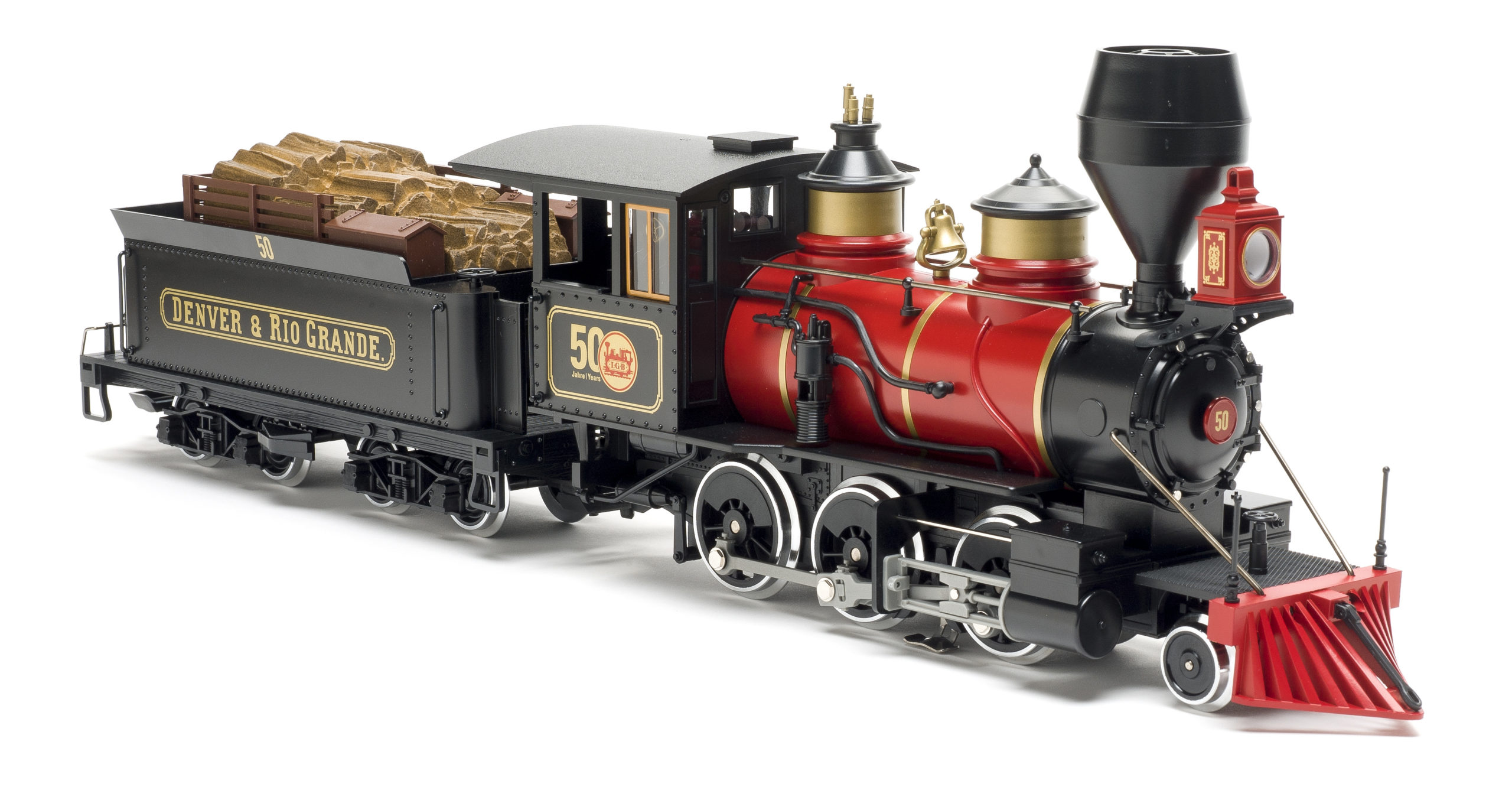Proxxon
Prox-Tech, Inc.
PO Box 1909
Hickory NC 28603 US
Price: $890
Website: http://shop.prox-tech.com
Miniature planer; plastic housing over heavy aluminum castings; two cutters; 6,000 rpm; 1/4-horse motor; constant automatic feed rate; infinitely adjustable feed depth in .05mm (around .002″) increments; wrenches supplied; instruction manual supplied; replacement blades available; feed rate, 15.75 feet per minute (3.15 inches per second); operates on 110V AC. Dimensions: 9″ x 9″ x 9″ (not including adjustment knob on top). Capacity: 80mm wide x 40mm high (39⁄64 ” x 137⁄64 )
Pros: Durable, well-made machine; simple to use; powerful motor; extremely precise thickness adjustment possible; built in anti-kickback device; zero-adjustable handwheel; can be used on all kinds of woods; comprehensive owner’s manual
Cons: No built-in vacuum hookup
The Micro Planer was designed with the hobbyist in mind. It is a heavy (for its size) machine, at 171/2 pounds. Its structural components are primarily aluminum castings. The cutting drum carries two replaceable cutting blades and rotates at 6,000 rpm. These blades have been sharpened on both sides, so are reversible before requiring replacement.
Work is automatically fed into the machine at a constant rate by two rubber rollers inside. The largest piece of wood that can be fed into the planer is 80mm wide x 40mm high (39/64″ x 137/64″). As the feed rate cannot be changed, larger or harder pieces of wood must be accommodated by varying the depth of the cut. There is a convenient maximum-cutting-depth chart on the top of the machine that lists four different-hardness woods (beech, alder, poplar, and balsa) and their recommended cutting depths based on several different widths.
The depth of the cut is varied by turning a wheel on the top of the planer. This wheel raises (or lowers) the feed table by 1mm for each full revolution. The wheel is marked in .05mm increments (around .002″), making exceedingly accurate work possible. Eyeballing a half-increment is not difficult either. The wheel is zero-adjustable—set it to zero when the blades just touch the work so you know how deep you’ll be cutting.
The planer is accompanied by a comprehensive owner’s manual. Read it! Even though this is a robust, well-made machine, there are a variety of ways you can damage both it and yourself if you are not careful or don’t fully understand what you are about. Safety is paramount and the book covers safety issues thoroughly, as well as how to use the machine to achieve the best results.
Also supplied with the planer are wrenches to be used in removing the plastic cover over the cutting head and removing the blades so they can be turned or replaced. The cutting head carries two blades. Replacement blades are available from Proxxon (#27 042, $16.50/pair).
It is recommended that the planer be permanently bolted to the workbench. Four holes in the feet are provided for this. For testing, I did not bolt the machine down but just placed it on top of my workbench. This proved satisfactory for short-term use but bolting it down would definitely be the way to go if you are going to be using it on a frequent, ongoing basis. When I plugged it in and turned it on, I found it wasn’t as loud as I expected it to be.
The machine takes a little getting used to. Until you’ve used it a bit, you don’t know when the blades actually contact the wood, as the rollers will grip it first and pull it through. It’s best to sneak up on it anyway, raising the table just a little at a time until you hear the blades make contact with the work. At that point you can zero-out the adjustment knob and start planing for real.
Once the blades are in contact with the work it’s easy to send a piece through. The chart atop the machine has recommendations of maximum cut depth based on the width and type of wood. Taking too big a bite will produce an unsatisfactory finish and could even damage the machine. The control knob is very sensitive and it’s easy to remove as little as a thousandth of an inch.
I tried several kinds of wood, including pine, redwood, basswood, and (a real toughy) end-grain maple. The planer handled all these with aplomb, producing a beautiful, flat finish that required little or no sanding.
With the widest and hardest woods, the table should be raised a tiny amount each time—say around .002″. This will give the best finish and cause the least distress to the machine. The thinnest I was able to plane a piece was slightly under 1/16″ (.063″). The shortest piece I felt comfortable putting through was around 4 1/2″ long. I noticed that sometimes the leading edge came out a little rough for the first inch or so, until both feed rollers were engaged. That should probably be taken into account when cutting wood on the saw prior to planing.
I found that, when starting out, a black residue appeared on the undersides of the boards, evidently left over on the bed from the manufacturing process. I didn’t clean this off but continued to run wood through the planer. The black eventually went away. It probably would have done so immediately had I given it a good
scrub down.
When planing smaller boards, multiple pieces could be put through simultaneously. It was easy to plane the wood to within .001″. Repeatability is excellent. The feed rate is constant, which I thought might be a problem. However, it turned out not to be so, as the cutting height can be so finely adjusted. Even when planing the really tough stuff, taking off .001″ at a time is no problem. At no time did the machine seem to labor.
The only thing I would like to have seen that this machine does not have is a vacuum take-off. The wood chips just come squirting out the back and they get into the innards of the machine, too. This is not a big deal—just plan for it. A blowdown with compressed air cleans it up in a jiffy.
While small, this machine is no toy. It is a high quality, precision piece of equipment that would enhance any model-builder’s shop. If you enjoy fine woodworking, would like to make your own custom stripwood for railway projects, or would just like to increase the capabilities of your shop, this tool will take you there. Highly recommended.





